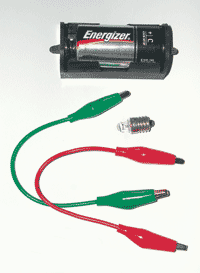|
||||||||||
|
|||||||||||||
| Questions/instructions:
|
|||||||||||||
| %
responses |
|||||||||||||
| 1.
Anei ngä rauemi hei whakamahi mäu. Honoa ngä rauemi hei
whakakä i te püaho. Ki te kore e taea e koe te whakakä
i te püaho, mäku e äwhina. Tukuna te äkonga kia mahi i töna kotahi. Mehemea ka hiahia äwhina te äkonga, anei ëtahi körero i raro nei. He äwhina: Whakamahia ia pito o te whakamau pühiko. Honoa ngä rawhi ki ënei wähanga o te whakamau pühiko.(Tohua ngä wähanga e körerohia nei.) Whakapängia ngä waea ki te püaho. Here is the equipment for you to use. Try to connect it so the bulb shines. If you can’t manage to make the bulb shine I’ll help you. Allow time for the student to attempt the task independently. Only use the following prompts if the student needs help. Prompts: Use each end of the battery holder. Put the alligator clips on these bits of the battery holder.(Point to the appropriate bits.) Touch the bulb with both wires. |
|||||||||||||
working
independently, student got bulb to shine |
20 |
||||||||||||
|
Mehemea ka raruraru tonu te äkonga mäu
e äwhina ki te whakakä i te püaho. If necessary assist the student to make bulb shine. |
|||||||||||||
| 2.
Titiro ki ngä rauemi, ka whakamärama mai ai he aha i kä
ai te püaho? He äwhina: He aha te take i kä ai te püaho? Look at your equipment and try to explain to me what made the bulb work? Prompt: What makes the light shine? |
complete
path/circuit for electricity to flow |
12 |
|||||||||||
the
battery pumps electricity/power/energy around the circuit |
6 |
||||||||||||
the
battery has energy/power in it |
56 |
||||||||||||
the
electricity goes through a thin wire (filament)
and makes it hot and it glows |
0 |
||||||||||||
| 3.
Titiro ki te waea whero me te waea käkäriki. He örite te rahi o te hiko e rere ana i ngä waea e rua nei, he rahi ake ränei te hiko e rere ana i tëtahi? Look at the red wire and the green wire. Is the same amount of electricity flowing through both wires, or does one wire have more electricity flowing through it than the other wire? |
|||||||||||||
| same
|
39 |
||||||||||||
| 4.
Whakamäramahia mai tö whakautu. He aha i pënä ai ö
whakaaro? Why do you say that? |
good
explanation for “same” (same amount has to go out as comes in, current electrons flow all around circuit) |
6 |
|||||||||||
incorrect
explanation for “different” (electricity used up in bulb) |
0 |
||||||||||||
| 5.
Ka roa haere te wä, ka pau haere te kaha o tëtahi pühiko.
He aha ai? Why do batteries usually go flat after they have been used for a while? |
not
marked |
• |
|||||||||||
Total
score: |
5–8 |
0 |
|||||||||||
3–4
|
19 |
||||||||||||
2
|
21 |
||||||||||||
1
|
43 |
||||||||||||
0
|
17 |
||||||||||||
| Commentary: Only 20 percent of students could get the bulb to shine by themselves, and similarly small percentages could explain about how electricity behaves in a simple electrical circuit. |
|||||||||||||
| |
||
